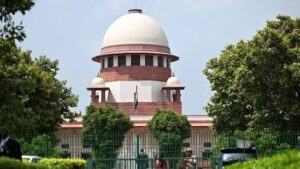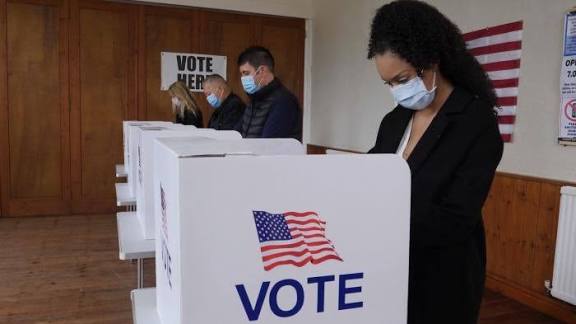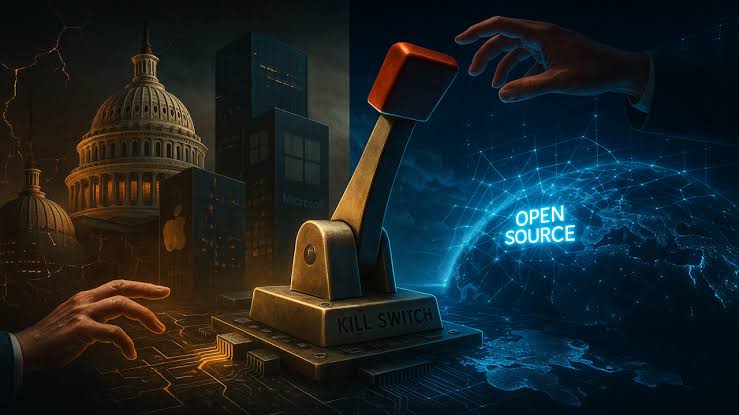Supreme Court on Edge: Justices Review Case That Could Limit Presidential Power

The Supreme Court is currently reviewing a case that could significantly limit the President’s power regarding the imposition of sweeping global tariffs. Today we will discuss about Supreme Court on Edge: Justices Review Case That Could Limit Presidential Power
Supreme Court on Edge: Justices Review Case That Could Limit Presidential Power
The United States Supreme Court is entering one of its most consequential periods in decades. A cascade of major cases — touching on presidential immunity, removal power over independent agencies, and limits on nationwide injunctions — has placed the Court at the center of a fierce national debate over the balance of power in American government. As the justices examine these issues, the Court itself appears to be sitting “on edge,” caught between competing visions of executive authority and judicial oversight.
These decisions could shape the architecture of American democracy for generations. Whether one believes the Court is correcting past judicial overreach or enabling excessive presidential power, the stakes could not be higher.
1. A Term Defined by Power Struggles

Three major legal battlegrounds define the current moment:
Presidential Immunity – determining the extent to which a president may be protected from prosecution for actions taken while in office.
Control Over Independent Agencies – questioning whether presidents should have broad power to remove or discipline the heads of regulatory bodies historically insulated from political pressure.
Limits on Nationwide Injunctions – evaluating whether federal courts may continue to block executive actions on a nationwide scale.
Each of these areas has long sat on the periphery of constitutional law. Now they have surged into the national spotlight — not in isolation, but in combination, forming a powerful shift in the balance of executive and judicial authority.
2. The Landmark Immunity Decision: Trump v. United States
One of the most dramatic and controversial decisions was the Supreme Court’s ruling in Trump v. United States, in which the Court determined that former President Donald Trump is entitled to broad immunity from criminal prosecution for many acts committed in office.
Majority Opinion: Expanding the Protective Shield
Chief Justice John Roberts delivered the opinion of the Court, affirming three critical points:
The president enjoys absolute immunity from criminal liability for actions deemed part of his “core constitutional powers.”
For a wide range of “official acts,” the president receives at least presumptive immunity, meaning prosecutors must meet high legal standards to overcome it.
The president has no immunity for “unofficial acts” — but the Court gave no clear definition of what counts as official versus unofficial.
This ambiguity ensures that future courts will spend years, possibly decades, parsing the boundaries of presidential immunity.
Roberts defended the ruling as necessary to protect the functioning of the executive branch. He argued that without strong immunity, a president could be paralyzed by fear of legal retaliation after leaving office, weakening leadership and inviting partisan legal warfare.
A Fiery Dissent: Concerns of an Unchecked Executive
Justice Sonia Sotomayor’s dissent was blistering. She warned that the decision hands presidents “a shield of absolute power,” creating a system where a president may be effectively above the law for significant acts performed in office.
She argued that the ruling undermines the core principle that no one — not even the president — is beyond accountability.
Legal scholars echoed these concerns, noting that the Court’s refusal to define key terms such as “official acts” leaves room for future presidents to push boundaries aggressively.
Democratic Implications
The ruling shifts the balance of power dramatically, raising three dangerous possibilities:
A president may operate with greater impunity, knowing legal consequences are unlikely.
“Official acts” could be interpreted so broadly that nearly all presidential behavior is shielded.
The impeachment process — highly political and rare — becomes the primary check, rather than the judiciary.
In short, the decision may transform the American presidency in ways the framers never intended.
3. Independent Agencies in the Crossfire: The Battle Over Removal Power
Another critical area the Court is reconsidering involves presidential authority over independent regulatory agencies — such as the Federal Trade Commission, the Securities and Exchange Commission, and similar bodies historically shielded from political influence.
The Old Rule: Humphrey’s Executor
Since the 1930s, a landmark case established that certain agency leaders could only be removed “for cause,” meaning presidents could not fire them for political reasons.
These protections were designed to ensure:
Stable, expert governance
Political neutrality
Resistance to executive overreach
A New Direction: Weakening Independence
More recent cases — including Seila Law v. CFPB — have chipped away at these protections, and the Court now appears willing to reconsider or even overturn the “for cause” standard entirely.
In recent orders and opinions, the conservative majority has shown growing willingness to give presidents greater control over agency heads. This would represent a seismic shift: independent agencies, once insulated from political pressure, could become direct extensions of the presidency.
What Would This Mean?
If the Court erodes independent agency protections:
Presidents could reshape regulatory agencies rapidly by firing leaders at will.
Political considerations could outweigh expertise in fields such as finance, labor, environmental protection, and consumer rights.
The line between independent oversight and executive control would blur — or vanish entirely.
Liberal justices argue this would destabilize the entire regulatory state, leading to volatile policy swings every time the presidency changes hands.
4. The Fight Over Nationwide Injunctions: Trump v. CASA
A quieter but equally impactful decision came in Trump v. CASA, which targeted the authority of federal courts to issue nationwide injunctions — sweeping orders that block government actions across the entire country.
The Court Restricts Judicial Power
In a 6–3 decision, the Court ruled that:
Federal judges may not issue nationwide injunctions unless necessary to provide complete relief to specific plaintiffs.
Universal injunctions — orders stopping enforcement of federal policy nationwide — are no longer permissible in most situations.
The only clear exception is when courts certify class-action lawsuits, allowing judges to issue broad protection for all members of a defined class.
Justice Barrett, writing for the majority, emphasized that judges must stay within their constitutional limits and not grant relief beyond what is “indispensable.”
The Dissent: Protecting Fundamental Rights
Justice Sotomayor argued that the ruling leaves millions of people unprotected from potentially unconstitutional policies if they are not parties to a lawsuit. Justice Jackson similarly warned that many individuals, especially vulnerable groups, lack the resources to bring cases on their own.
Real-World Impact: Birthright Citizenship Cases
The decision immediately affected ongoing challenges to a presidential executive order restricting birthright citizenship. Lower courts that had blocked the policy nationwide must now narrow their rulings, applying them only to plaintiffs or certified classes.
This means:
Policies may take effect in some states while remaining blocked in others.
Individuals outside the plaintiff group may not be protected, even if the policy is likely unconstitutional.
More class-action lawsuits will be filed as a strategic workaround.
Shrinking Judicial Oversight
By limiting nationwide injunctions, the Court curtailed one of the judiciary’s most potent tools for halting controversial executive actions swiftly and uniformly.
Critics argue this creates a patchwork of inconsistent protections and weakens the courts’ ability to act as a check on presidential power.
5. A Conservative Court Reshaping the Constitution
Taken together, these decisions reflect a broader constitutional shift:
A Stronger Presidency
Expanded immunity
Greater control over federal agencies
Reduced judicial ability to block executive actions
A Weaker Judicial Check
Narrower injunctive powers
Increased reliance on slow-moving class-action litigation
Greater deference to executive authority
A More Politicized Governance Structure
Independent agencies risk becoming political arms
Executive orders may face fewer judicial obstacles
Power consolidates into the hands of the president and the Court’s majority
This moment may ultimately be remembered as a turning point in the evolution of American governmental power.
6. Public Trust, Legitimacy, and the Court’s Future
The Supreme Court, as an institution, depends heavily on public legitimacy. While the Court does not follow opinion polls, its authority ultimately derives from public confidence in its neutrality and judgment.
Growing Concerns
Critics across the political spectrum warn that:
The Court appears increasingly partisan.
Its rulings consistently expand executive power when politically aligned with the majority.
The boundary between legal reasoning and political outcomes feels blurred.
Justice Sotomayor has publicly expressed worry that decisions like the immunity ruling threaten the Court’s credibility.
A Nation Divided
To some, the Court is correcting decades of judicial activism and restoring appropriate limits on the judiciary. To others, the Court is enabling authoritarian tendencies and weakening the constitutional framework designed to restrain presidents.
Regardless of perspective, the decisions have deepened national polarization.
7. What Comes Next
These issues are far from settled. In the coming months and years:
Lower courts will refine distinctions between “official” and “unofficial” presidential acts.
Additional challenges to executive removal power will reach the Supreme Court.
More class-action lawsuits will be used to counter major federal policies.
Congress may face pressure to clarify or limit presidential power through legislation.
The American public may also see increasing calls for:
Judicial reforms
Constitutional amendments
Greater oversight of the executive branch
Rebalancing of federal powers
The system remains adaptable — but only if its institutions continue to function cooperatively and transparently.
8. Conclusion: A Supreme Court at a Turning Point
The Supreme Court is indeed on edge — not just because of the cases before it, but because its decisions are reshaping the very foundation of American governance.
The Court is redefining:
how presidents may be held accountable
how independent agencies function
how federal courts may limit executive actions
These are not narrow legal adjustments. They are structural recalibrations with profound implications for democracy, separation of powers, and the rule of law.
America now stands at a crossroads. The choices the Court makes — and how the public and Congress respond — will determine whether the balance of power shifts decisively toward the presidency or returns to a more traditional equilibrium.
In either case, the nation is witnessing constitutional change in real time. And the world is watching.
How useful was this post?
Click on a star to rate it!
Average rating 0 / 5. Vote count: 0
No votes so far! Be the first to rate this post.
About the Author
usa5911.com
Administrator
Hi, I’m Gurdeep Singh, a professional content writer from India with over 3 years of experience in the field. I specialize in covering U.S. politics, delivering timely and engaging content tailored specifically for an American audience. Along with my dedicated team, we track and report on all the latest political trends, news, and in-depth analysis shaping the United States today. Our goal is to provide clear, factual, and compelling content that keeps readers informed and engaged with the ever-changing political landscape.




